Apply
now
now
Design 1: Digital Design Skills
level of course unit
BachelorLearning outcomes of course unit
Students in this course acquire sound knowledge and skills in developing and designing web applications and websites. A central component is developing the ability to design appealing and functional web applications.
The students
- understand the development process for web applications
- can apply the basic technologies of the World Wide Web, including HTTP, HTML, and CSS.
- can create web applications for different device classes (responsive or adaptive web design) themselves
- can systematically develop the information architecture of a web application (sitemap, navigation structure, user guidance)
- understand the relevant design principles of web design with regard to colors, shapes, typography, multimedia
- understand the design principles of web design and can apply them themselves using simple examples
The students
- understand the development process for web applications
- can apply the basic technologies of the World Wide Web, including HTTP, HTML, and CSS.
- can create web applications for different device classes (responsive or adaptive web design) themselves
- can systematically develop the information architecture of a web application (sitemap, navigation structure, user guidance)
- understand the relevant design principles of web design with regard to colors, shapes, typography, multimedia
- understand the design principles of web design and can apply them themselves using simple examples
prerequisites and co-requisites
none
course contents
The subject of this introductory course is the technological foundations of the web and all critical implementation technologies in this context (HTML, CSS). Students are introduced to the entire development process of a web applica-tion (design, wireframing, implementation, testing, operation, and maintenance), with a particular focus on the inter-face between web design and web programming. Special focus is placed on omnipresent web technologies that are widely used, such as the HTTP protocol for communication between the web server and client, HTML, and CSS as primary tools for the display aspects on the client side. The basics of Internet programming, page coding with the markup and markup language HTML, basic formatting, tables, forms, and CSS basics (structure of CSS files, selectors, simple formatting options, dynamic display effects) are taught. Furthermore, students are taught how to create appeal-ing websites and web applications. In addition to technological standards, this also includes specialist knowledge in the areas of layout and perception, typography (readability and font formats), and color theory (color schemes and color effects).
This course provides a solid foundation for students to develop their web design and product development skills further and successfully apply them in the marketplace.
This course provides a solid foundation for students to develop their web design and product development skills further and successfully apply them in the marketplace.
recommended or required reading
- Ertel, A.; Laborenz, K.: Responsive Webdesign: Konzepte, Techniken, Praxisbeispiele. Das Standardwerk in 3. Auflage!, Rheinwerk Computing, 2017
- Wolf, J.: HTML5 und CSS3 - Das umfassende Handbuch, Rheinwerk Computing, 2019
- Krug, S.: Don't make me think!: Web Usability: Das intuitive Web, mitp Business, 2014
- Grant, K.: CSS in Depth, Manning, 2018
- Wolf, J.: HTML5 und CSS3 - Das umfassende Handbuch, Rheinwerk Computing, 2019
- Krug, S.: Don't make me think!: Web Usability: Das intuitive Web, mitp Business, 2014
- Grant, K.: CSS in Depth, Manning, 2018
assessment methods and criteria
Portfolio review
language of instruction
Englishnumber of ECTS credits allocated
6eLearning quota in percent
20course-hours-per-week (chw)
3planned learning activities and teaching methods
Presentations, group work, presentation and discussion of tasks






